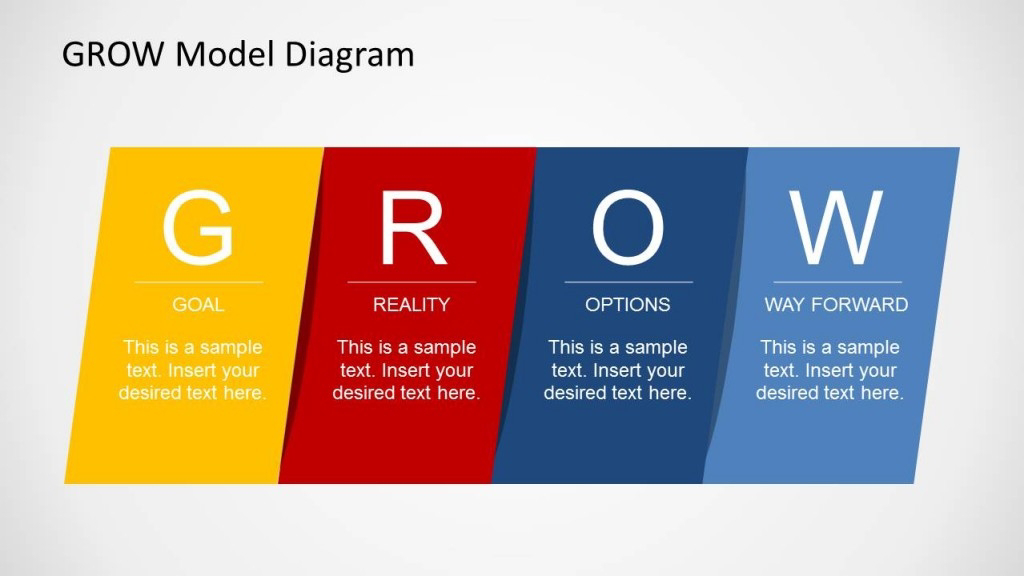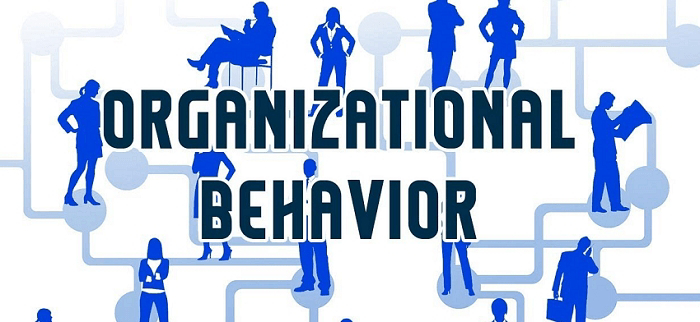Friday, 30 June 2023
[30062023] Navigating the V.U.C.A. World: Embracing Change and Uncertainty
[30062023] Embracing the Power of Resilience: Thriving Through Life's Challenges
Thursday, 29 June 2023
[29062023] GROW
[30062023] A S K
Wednesday, 28 June 2023
[28062023] Clean heart
Tuesday, 27 June 2023
[27062023] Day of Arafah
[27062023] Defuse Tense Situation
When attempting to defuse a tense situation, it's essential to approach it with caution and sensitivity. Here's a strategy that can help:
1. Stay Calm: Maintaining your own composure is crucial in diffusing tension. Take deep breaths, relax your body, and consciously choose to remain calm. Your calm demeanor can have a positive influence on others involved in the situation.
2. Active Listening: Give everyone involved an opportunity to express their thoughts and feelings. Practice active listening by focusing your attention on the speaker, maintaining eye contact, and refraining from interrupting or judging. Show empathy and understanding by acknowledging their perspective.
3. Validate Emotions: Acknowledge and validate the emotions of those involved in the tense situation. Let them know that you understand their feelings and concerns. Validating emotions can help individuals feel heard and respected, which can contribute to de-escalation.
4. Use Non-Threatening Language: Choose your words carefully to avoid escalating the situation further. Use non-threatening and neutral language to convey your message. Avoid blaming or accusing others, and instead, focus on expressing your own feelings and observations.
5. Find Common Ground: Look for areas of agreement or common ground among the parties involved. Highlight shared interests or goals to foster a sense of unity and collaboration. Emphasizing commonalities can help shift the focus away from the conflict and towards finding a resolution.
6. Suggest a Break or Change of Environment: If the tension continues to rise despite your efforts, suggest taking a short break or changing the environment. Moving to a different location or allowing everyone to have some time to cool off can provide an opportunity for reflection and a fresh start.
7. Seek Mediation if Necessary: If the tension persists or the situation seems unresolvable, consider involving a neutral third party as a mediator. A mediator can help facilitate constructive communication and guide the parties involved towards a resolution.
Remember, defusing tense situations requires patience, empathy, and effective communication skills. It's important to approach each situation with an open mind and a genuine desire to find a peaceful resolution.
[27062023] Positivity supersedes negativity
[27062023] Heirarchial vs Collegial Structure
Sunday, 25 June 2023
[25062023] EQUALITY VS EQUITY
Equality and equity are two concepts often used in discussions about fairness and justice. While they are related, they have distinct meanings and implications.
Equality refers to the state of being equal or having the same rights, opportunities, and treatment. It emphasizes the idea of treating everyone in the same way without discrimination or favoritism. The principle of equality promotes the notion that all individuals should have equal access to resources, opportunities, and privileges regardless of their differences or backgrounds.
Equity, on the other hand, takes into account the fact that people have different needs, circumstances, and levels of disadvantage. It recognizes that true fairness may require treating individuals differently based on their unique circumstances to achieve a more just outcome. Equity focuses on addressing systemic barriers and historical disadvantages by allocating resources and opportunities in a way that accounts for these differences, aiming to achieve a more level playing field.
To better understand the distinction, consider an example: There is a high wall that blocks people from watching a baseball game. Equality would involve giving everyone the same-sized box to stand on, regardless of their height. While this might seem fair, it doesn't consider that some individuals may still be unable to see over the wall due to their height. Equity, on the other hand, would involve giving taller individuals smaller boxes and shorter individuals taller boxes, thus ensuring that everyone has an equal opportunity to watch the game.
In summary, equality focuses on treating everyone the same, while equity recognizes and addresses the diverse needs and circumstances of individuals to achieve a more just outcome. Both concepts are important in promoting fairness and justice, but they may be applied differently depending on the context and the specific goals being pursued.
[25062023] UNDERSTANDING GENERATION GAP
The generation gap refers to the differences in beliefs, values, attitudes, and behaviors between younger and older generations. It arises from the fact that each generation grows up in a different social, economic, and technological context, leading to distinct experiences and perspectives.
Here are some key factors that contribute to the generation gap:
1. Socioeconomic and Historical Context: Each generation grows up during a particular era, with its own unique events, challenges, and cultural influences. Historical events, such as wars, economic recessions, or social movements, shape the values and priorities of a generation.
2. Technology: Technological advancements have a significant impact on the generation gap. Younger generations often embrace new technologies more readily and integrate them into their daily lives, while older generations may be less familiar with or resistant to change.
3. Communication and Media: The way people communicate and consume media has evolved over time. Younger generations are typically more connected through social media platforms, while older generations may rely on traditional forms of communication. This difference in communication styles can lead to misunderstandings and conflicts.
4. Values and Beliefs: Each generation tends to develop its own set of values and beliefs influenced by societal norms and cultural shifts. These values may differ in areas such as work-life balance, gender roles, environmental awareness, and social justice, leading to conflicts and misunderstandings between generations.
5. Education and Upbringing: Educational systems and parenting styles have also changed over time. Younger generations may have been exposed to different teaching methods and educational philosophies compared to their parents and grandparents. This can lead to differing opinions on topics like discipline, authority, and the importance of formal education.
Understanding the generation gap is crucial for fostering intergenerational understanding and cooperation. Recognizing and respecting the unique perspectives of each generation can help bridge the gap and promote meaningful dialogue, empathy, and collaboration between different age groups.
[25062023] Rezeki!
[25062023] I AM ENOUGH!
Boosting someone's confidence to be themselves and recognizing their self-worth is an important process that can be supported through various strategies. Here are some suggestions:
1. Encourage self-reflection: Help the person explore their strengths, values, and passions. Encourage them to identify and acknowledge their positive qualities, skills, and accomplishments. This self-reflection can help them recognize their own worth and uniqueness.
2. Provide genuine support: Offer sincere encouragement and validation for their choices, decisions, and actions. Let them know that you appreciate and value them for who they are. Be a listening ear and provide constructive feedback when needed.
3. Promote self-care: Encourage them to prioritize self-care activities that promote physical, emotional, and mental well-being. This can include activities such as exercise, hobbies, relaxation techniques, and spending time with loved ones. Taking care of oneself can boost self-confidence and foster a positive self-image.
4. Challenge negative self-talk: Help them become aware of their negative self-talk and assist them in reframing those thoughts into more positive and realistic ones. Encourage them to replace self-criticism with self-compassion and self-acceptance.
5. Foster a supportive environment: Create a safe and accepting space where they can be themselves without fear of judgment. Surround them with positive influences and individuals who appreciate and celebrate their authentic self.
6. Set realistic goals: Encourage them to set achievable goals that align with their values and interests. Celebrate their progress and successes along the way. Achieving personal goals can enhance self-confidence and reinforce their belief in their capabilities.
7. Practice assertiveness: Encourage them to express their thoughts, opinions, and needs assertively. Teach them how to set boundaries and say no when necessary. Developing assertiveness skills can empower them to be true to themselves and advocate for their own worth.
Remember, building confidence and recognizing one's self-worth is a gradual process. Be patient, supportive, and understanding throughout their journey of self-discovery.
Saturday, 24 June 2023
[24062023] Becoming an Awesome Boss: Cultivating Firmness Without Toxicity
Thursday, 22 June 2023
[22062023] Addressing Sexual Harassment: Understanding Types, Identifying, and Seeking Help
Monday, 19 June 2023
[19062023] The Power of Self-Reward: Celebrating Your Journey to Success
In our pursuit of personal growth and achievement, it's easy to overlook the importance of acknowledging and celebrating our own progress. We often focus on the end goals, forgetting that the journey itself is filled with small victories and milestones worthy of recognition. That's where self-reward comes in—a powerful tool that can fuel motivation, boost self-esteem, and enhance our overall well-being. In this blog, we'll delve into the significance of self-reward and explore practical ways to incorporate it into our lives.
Embracing the Value of Self-Recognition:
- Acknowledging your accomplishments: Take a moment to appreciate your achievements, big and small, as they signify progress and growth.
- Boosting self-esteem: Self-reward reinforces positive self-perception, fostering a healthy sense of self-worth and confidence.
- Cultivating intrinsic motivation: By recognizing your efforts, you create an internal drive to continue working towards your goals.
Implementing Self-Reward Techniques:
- Goal-based rewards: Set specific goals and define corresponding rewards, ensuring they align with your values and aspirations.
- Milestone celebrations: Break down larger goals into smaller milestones, commemorating each one as you progress.
- Time-based rewards: Allocate dedicated time for focused work or personal development, then reward yourself with enjoyable activities or moments of relaxation.
- Personalized rewards: Tailor your rewards to match your interests and passions, ensuring they provide true satisfaction and joy.
Balancing Self-Reward and Discipline:
- Finding equilibrium: While self-reward is crucial, it's important to strike a balance with discipline and self-discipline.
- Aligning rewards with goals: Ensure that your rewards support your long-term objectives and contribute positively to your growth.
- Delayed gratification: Practice delayed gratification by using rewards as incentives for achieving significant milestones or completing challenging tasks.
Expanding Self-Reward Beyond Materialistic Pleasures:
- Self-care and well-being: Prioritize activities that nourish your mental, emotional, and physical health, such as meditation, spa days, or engaging in hobbies.
- Learning and personal development: Invest in educational experiences and celebrate personal growth through courses, workshops, or attending conferences.
- Quality time with loved ones: Recognize the importance of connection and reward yourself with meaningful experiences shared with friends and family.
In our fast-paced lives, it's vital to remember that self-reward is not a luxury but a necessity. Celebrating our journey to success through self-recognition, meaningful rewards, and moments of joy can greatly enhance our well-being and fuel our motivation. By embracing the power of self-reward, we not only honor our accomplishments but also cultivate a positive mindset, resilience, and a deep sense of fulfillment. So, let us pause, appreciate our progress, and embark on a rewarding journey toward our dreams.
Sunday, 18 June 2023
[18062022] The Curse of Micromanagement: Strangling Productivity and Creativity
Saturday, 17 June 2023
[17062023] CnI
Familiar names!
1. Homer (8th century BCE) - "Iliad" and "Odyssey" (circa 8th century BCE), epic poems containing valuable educational themes and lessons.
2. Socrates (4th century BCE) - No specific published work, but known for his contributions to questioning and critical thinking.
3. Plato (4th century BCE) - "The Republic" (circa 380 BCE), addressing educational philosophy and the ideal curriculum.
4. Aristotle (4th century BCE) - "Nicomachean Ethics" (circa 350 BCE), exploring moral education and the development of character.
5. Quintilian (1st century CE) - "Institutio Oratoria" (circa 95 CE), discussing rhetorical education and effective communication.
6. Confucius (5th century BCE) - "The Analects" (compiled posthumously), containing teachings on ethical education and social harmony.
7. Mozi (5th century BCE) - "Mozi" (compiled posthumously), advocating for inclusive education and universal love.
8. Al-Farabi (9th century) - "The Book of Letters" (circa 9th century), discussing curriculum development and various subjects.
9. Avicenna (11th century) - "The Book of Healing" (1027) and "The Canon of Medicine" (1025), influential works in medical education.
10. Peter Abelard (12th century) - "Sic et Non" (1121), emphasizing critical thinking and dialectic in theological education.
11. Thomas Aquinas (13th century) - "Summa Theologica" (1265-1274), integrating faith and reason in curriculum design.
12. John Amos Comenius (17th century) - "Didactica Magna" (1657), advocating for universal education and a comprehensive curriculum.
13. Jean-Jacques Rousseau (18th century) - "Emile" (1762), proposing an educational philosophy based on natural development and hands-on learning.
14. Johann Heinrich Pestalozzi (18th-19th century) - "How Gertrude Teaches Her Children" (1801), focusing on holistic education and active learning.
15. Friedrich Froebel (19th century) - "The Education of Man" (1826), introducing the concept of kindergarten and emphasizing play-based learning.
16. Maria Montessori (20th century) - "The Montessori Method" (1912), promoting a child-centered approach and the use of manipulative materials.
17. John Dewey (20th century) - "Democracy and Education" (1916), advocating for experiential learning and a student-centered approach.
18. Rudolf Steiner (20th century) - "The Education of the Child" (1907), influential in the development of Waldorf education.
19. Jean Piaget (1936) - "The Origins of Intelligence in Children" (1936), pioneering cognitive development theories and constructivist learning.
20. Lev Vygotsky (1962) - "Thought and Language" (1962), emphasizing social interaction, cultural context, and the zone of proximal development.
21. Benjamin Bloom (1956) - "Taxonomy of Educational Objectives" (1956), providing a framework for categorizing learning objectives.
22. Jerome Bruner (1960) - "The Process of Education" (1960), highlighting discovery learning, scaffolding, and the role of culture in learning.
23. B.F. Skinner (1958) - "The Technology of Teaching" (1958), exploring behaviorist approaches and programmed instruction in curriculum design.
24. Paulo Freire (1968) - "Pedagogy of the Oppressed" (1968), advocating for critical pedagogy and the transformation of oppressive systems.
25. William Glasser (1969) - "Schools Without Failure" (1969), focusing on choice theory and intrinsic motivation in curriculum design.
26. Howard Gardner (1983) - "Frames of Mind" (1983), introducing the theory of multiple intelligences and its implications for instruction.
27. Nel Noddings (1984) - "Caring: A Feminine Approach to Ethics and Moral Education" (1984), emphasizing care and relationships in education.
28. Maxine Greene (1995) - "Releasing the Imagination" (1995), exploring the transformative power of the arts and imagination in learning.
29. Elliot Eisner (2002) - "The Arts and the Creation of Mind" (2002), advocating for arts-based education and aesthetic experiences.
30. Linda Darling-Hammond (2010) - "The Flat World and Education" (2010), addressing curriculum and instructional practices for a globalized world.
31. David Ausubel (1968) - "Educational Psychology: A Cognitive View" (1968), focusing on meaningful learning and the organization of knowledge.
32. Lev Semenovich Vygotsky (1978) - "Mind in Society" (1978), emphasizing social interaction, scaffolding, and cultural tools in learning.
33. Robert M. Gagne (1965) - "The Conditions of Learning" (1965), exploring instructional design principles and learning hierarchies.
34. Grant Wiggins and Jay McTighe (1998) - "Understanding by Design" (1998), advocating for a backward design approach in curriculum planning.
35. Paulo Blikstein (2013) - "Travels in Troy with Freire: Participatory Simulations for Learning in Informal Settings" (2013), focusing on maker education and project-based learning.
36. Carol Dweck (2006) - "Mindset: The New Psychology of Success" (2006), introducing the concept of growth mindset and its impact on learning.
37. Yong Zhao (2012) - "World Class Learners: Educating Creative and Entrepreneurial Students" (2012), exploring curriculum for global competencies and entrepreneurial skills.
38. Linda Nilson (2014) - "Specifications Grading: Restoring Rigor, Motivating Students, and Saving Faculty Time" (2014), focusing on competency-based grading approaches.
39. H. Lynn Erickson (2008) - "Concept-Based Curriculum and Instruction: Teaching Beyond the Facts" (2008), promoting deep understanding and transfer of knowledge.
40. Ken Robinson (2009) - "The Element: How Finding Your Passion Changes Everything" (2009), advocating for a curriculum that values creativity and individual talents.
41. Dylan Wiliam (2011) - "Embedded Formative Assessment" (2011), highlighting formative assessment strategies for improving learning outcomes.
42. Linda Darling-Hammond (2017) - "Empowered Educators: How High-Performing Systems Shape Teaching Quality Around the World" (2017), focusing on teacher education and curriculum policies.
43. Gloria Ladson-Billings (1994) - "The Dreamkeepers: Successful Teachers of African American Children" (1994), addressing culturally responsive teaching and educational equity.
44. James Banks (2015) - "Cultural Diversity and Education: Foundations, Curriculum, and Teaching" (2015), exploring multicultural education and diverse perspectives in the curriculum.
45. Yong Zhao (2015) - "World Class Learners: Educating Creative and Entrepreneurial Students" (2015), emphasizing the need for a curriculum that fosters innovation and creativity.
46. Sugata Mitra (2013) - "Beyond the Hole in the Wall: Discover the Power of Self-Organized Learning" (2013), discussing self-directed learning and collaborative environments.
Please note that the list includes theorists with varying degrees of emphasis on curriculum and instruction, as well as some who have made significant contributions to education more broadly. The specific works mentioned represent key publications by each theorist but may not encompass their entire body of work.
Friday, 16 June 2023
[16062023] الحق بلا نظام غلبه الباطل بالنظام
In every aspect of life, from personal endeavors to complex organizations, having a well-structured system or planning, commonly known as "nizam," is essential for achieving success. Nizam provides the framework for organizing, executing, and reaching desired goals. However, when a system or planning is lacking or poorly implemented, the consequences can be detrimental. In this blog post, we will explore the significance of nizam and delve into the implications of a poor system or planning.
Nizam encompasses the methods, procedures, and strategies employed to streamline processes, achieve efficiency, and facilitate progress. It brings order to chaos, enabling individuals or entities to work systematically towards their objectives. A well-implemented nizam ensures clarity, focus, and accountability, leading to increased productivity and better outcomes.
Implications of a Poor System or Planning:
Lack of Direction: Without a proper system or planning, individuals or organizations may lack a clear direction. This results in a sense of aimlessness and haphazard decision-making. As a consequence, precious time and resources are wasted, and progress becomes elusive.
Inefficiency and Productivity Loss: Poorly designed or executed systems lead to inefficiencies. Tasks may be duplicated, communication may break down, and coordination becomes challenging. Consequently, productivity suffers, and desired results are compromised.
Increased Errors and Mistakes: A lack of nizam often leads to errors and mistakes. When processes are not clearly defined or followed, misunderstandings occur, and important details may be overlooked. This can result in compromised quality, customer dissatisfaction, and costly rework.
Missed Opportunities: Without a well-structured system, individuals or organizations may miss out on potential opportunities. Lack of planning hinders the ability to identify and capitalize on favorable circumstances or emerging trends. Opportunities for growth or improvement are lost, impacting long-term success.
Poor Resource Management: Inadequate planning leads to poor resource allocation and utilization. Scarce resources may be squandered or misdirected, resulting in unnecessary costs or shortages. Optimal utilization of resources becomes challenging without a system in place to guide decisions.
Lack of Adaptability: A rigid or insufficient system inhibits adaptability. In today's dynamic world, being able to adjust and respond to changing circumstances is crucial. Without a flexible planning framework, individuals or organizations struggle to adapt to evolving needs or seize new opportunities.
The importance of nizam, or a well-structured system and planning, cannot be overstated. It is the backbone of efficiency, productivity, and success. A poor system or planning can have serious implications, including directionless efforts, inefficiencies, errors, missed opportunities, and resource mismanagement. Recognizing the significance of nizam and investing in its implementation can help individuals and organizations navigate challenges effectively, seize opportunities, and achieve their desired goals.
Thursday, 15 June 2023
[15062023] Embracing Change: Job Rotation, Personal Growth, and Community Impact
Tuesday, 13 June 2023
[13062023] Emotions vs Reasons
Sunday, 11 June 2023
[11062023] MANANG TRIP BY 3K JABATAN PENDIDIKAN NEGERI PERLIS
Thursday, 8 June 2023
[08062023] Cloud 9
[08062023] OB
[27042025] Kebenaran dan Larangan Berdiri Dalam Islam: Antara Penghormatan dan Larangan Mengagungkan
Pengenalan Dalam kehidupan seharian, kita sering berdiri untuk menyambut guru, pemimpin, atau tetamu. Namun, terdapat juga hadis yang seakan...
-
What is "Mengadu Domba"? In Malay, "mengadu domba" literally translates to "complaining like a goat. " Howe...
-
Once upon a time, in a faraway land, there lived a king whose castle was modest but whose subjects were safe, prosperous, and content. Howev...
-
Praise be to Allah For all the blessings For all the barakah For all the bounties For my beloved family For my friends and companions For al...










.jpg)













.jpeg)














